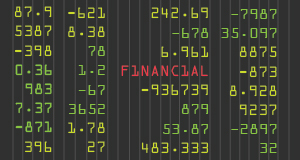In the Dutch bank's Spirits Quarterly Q4: 'Rum Caught in the Middle' author, senior wine and spirits industry analyst Stephen Rannekleiv, says: “In both the US and Europe, rum sales have been on the decline. But we believe the category has opportunities to regain its footing in both markets.
“In general, financial performances of spirits companies showed moderate signs of improvement in most major markets this quarter, displaying increased margins and profitability.
“As consumer confidence recovered in developed markets and consumers gradually emphasised premium spirits, operating margins expanded, according to the report,” he reports.
He goes on to say:
US Craft distiller threat greatly exaggerated
“Meanwhile, in the US, craft distillers continue to show solid growth. But their threat to major distillers is greatly exaggerated and their benefits to the category underestimated. “Craft distillers are enjoying exceptional growth rates- a trend we expect will continue- but their threat to major distillers has been overblown. The top 17 largest spirits companies in the US actually gained share over the past few years.
"Craft distillers are generating excitement and helping to expand the spirits market, but it is the innovative second tier companies (by size), such as Proximo, Gallo, Brown-Forman and Luxco, that are really gaining market share”, reports Rannekleiv.
Europe is stable
“General trends in Europe suggest a stabilising market environment, with signs of moderate improvement for the large public spirits companies. Spanish consumer sentiment is improving, and UK depletion trends have heated up over the summer, but Russia remains challenged,” he states.
"Brazil spirits consumption trends are soft and the near-term outlook is gloomy
“A soft consumer environment in Brazil is weighing on spirits consumption, and a proposed tax increase on alcohol in 2016 will create further challenges for the sector,” he said.
Meanwhile in Asia
“Chinese consumption of imported spirits appears to have stabilised somewhat as the industry begins to cycle the impact of austerity measures. However, turbulence persists due to the ongoing volatility of the stock market and the largest devaluation of the yuan in two decades. The full impact of this volatility when it comes to consuming imported spirits is still unclear, but the risks appear to skew to the downside.
"In India, we have seen volume declines due to a growing focus on premium, away from value brands. Shelf prices have also been impacted as a result of a rise in taxes on alcohol,” said Rabobank's Rannekleiv.




